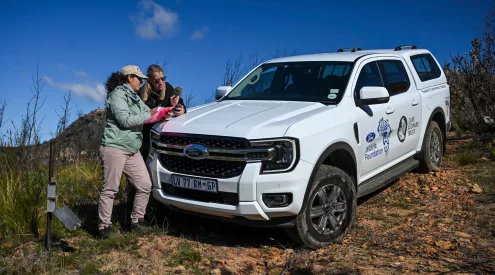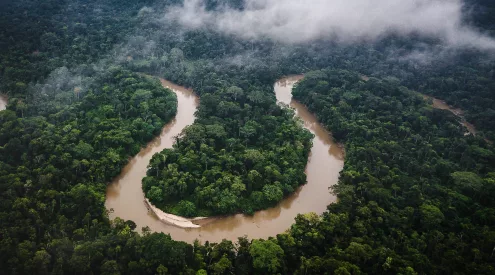You may feeling like throwing out your old, unused mobile phone, but why not recycle it and help save gorillas, their habitat and, by extension, the environment.
Eastern lowland gorillas as well as eastern chimpanzees in the Democratic Republic of Congo (DRC) are continuously threatened by illegal mining of metal elements used in cellphones and computers, research shows.

In a recent study from the University of South Australia (UniSA) in Adelaide, three researchers and contributors explain the extent to which the electronics and tech industries are affecting gorilla populations in Central Africa, and the psychology behind peoples’ responses to environmental campaigns which implore users to donate and recycle their old devices. The researchers found that while people might care about saving the planet, it doesn’t always translate to action or commitment, especially when asked to ‘retire’ their old phones.
Also read: The only gorilla trekking story you’ll ever need to read
The study claims that about 400-million mobile phones are upgraded annually, and phone and computer sales account for 4% of the gold and silver and 20% of the cobalt and palladium mined annually.
The mining of coltan, a metallic ore from which the metals niobium and tantalum are extracted, imperils the eastern lowland gorilla (Gorilla beringei graueri) and eastern chimpanzee (Pan troglodytes schweinfurthii) in the DRC, where civil unrest is rife and mining often takes place in protected areas, such as national parks, and without regulation. Elements like coltan are known as ‘conflict metals’ for this reason. While the great apes are often killed for their meat, their habitat is also affected by mining and populations are now in decline to such an extent that the IUCN Red List of Threatened Species declared the eastern lowland gorilla ‘Critically Endangered’.
The chemicals in old electronic devices are dangerous for the environment as they leach or drain into the soil in landfill sites.
View this post on Instagram
Researchers and contributors to the Australian study found that zoos can be agents of change when it comes to ‘pro-conservation behaviours’. There are about 600-million global zoo visitors every year, and the study assesses the success of conservation education and campaigning in three South Australia zoos.
Zoos Victoria comprises of three Australian zoos which care predominantly for Western gorillas (Gorilla gorilla) which are also Critically Endangered. By creating awareness through various campaigns in and beyond their zoos and providing collection/donation boxes for old cellular devices, the conservation organisation collected a whopping 115,369 mobile phones between the years 2009-2014.
The study notes that people are reluctant to retire their old phones, and that e-waste recycling and collection points are not widespread.
Last year on 24 January 2018, the Jane Goodall Institute rallied support for International Mobile Phone Recycling Day with a ‘Call to Action’ campaign. If you want to answer that call in 2019, check out these South African e-waste buyers and recyclers:
– Last year weFix stores installed recycling bins in their stores
– Desco assists Samsung and has recycling bins in Incredible Connection, HiFi Corporation and Makro outlets
– Liatros Recycling (Johannesburg)
– cell-RE-cycle (Cape Town)
– Electronic Cemetery (Durban)
Find out more about what you can do from the e-Waste Association of South Africa (eWASA).
Citation:
Litchfield CA, Lowry R, Dorrian J (2018) Recycling 115,369 mobile phones for gorilla conservation over a six-year period (2009-2014) at Zoos Victoria: A case study of ‘points of influence’ and mobile phone donations. PLoS ONE 13(12): e0206890. https://doi.org/10.1371/journal. pone.0206890\
Featured image: Unsplash


















